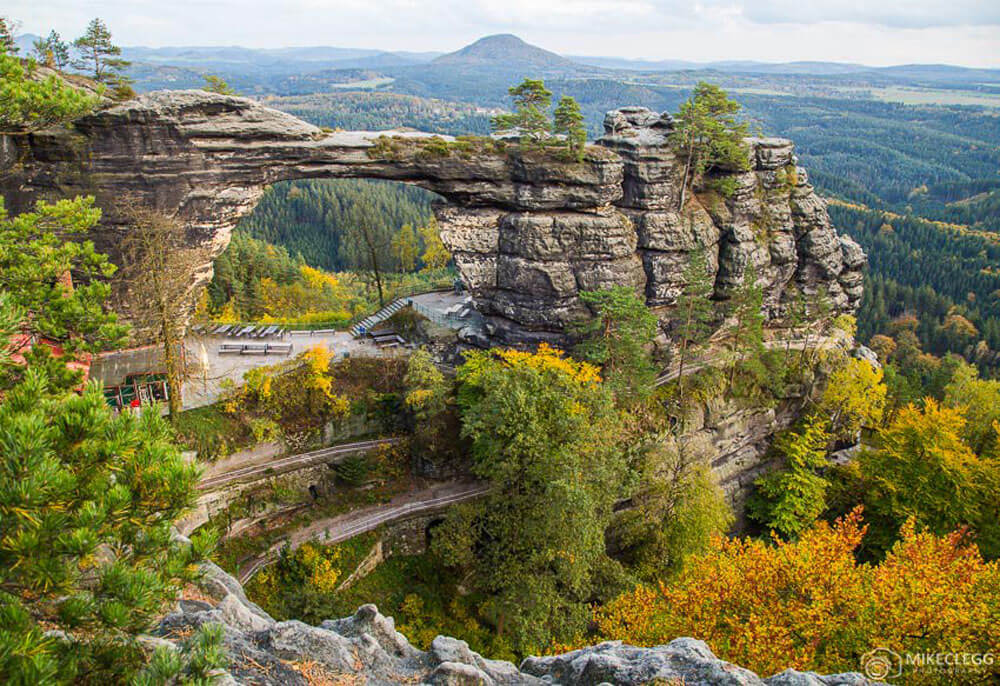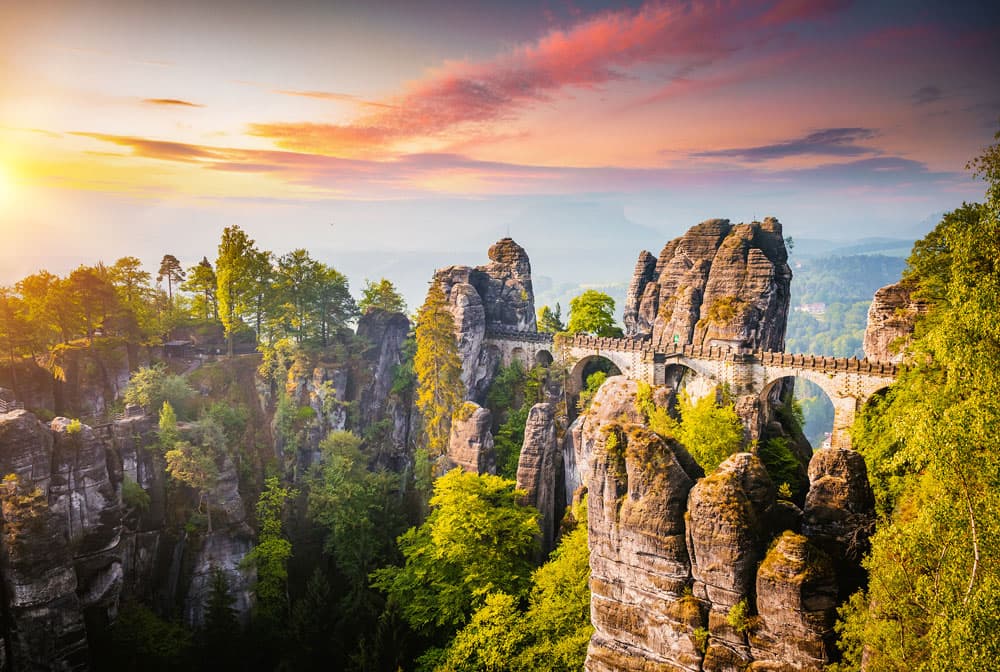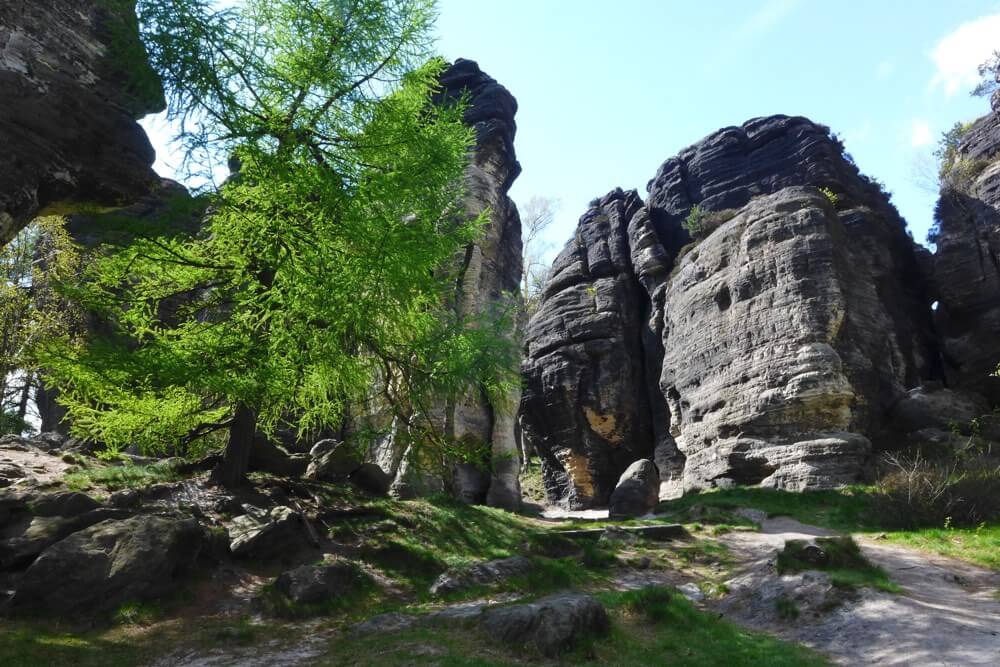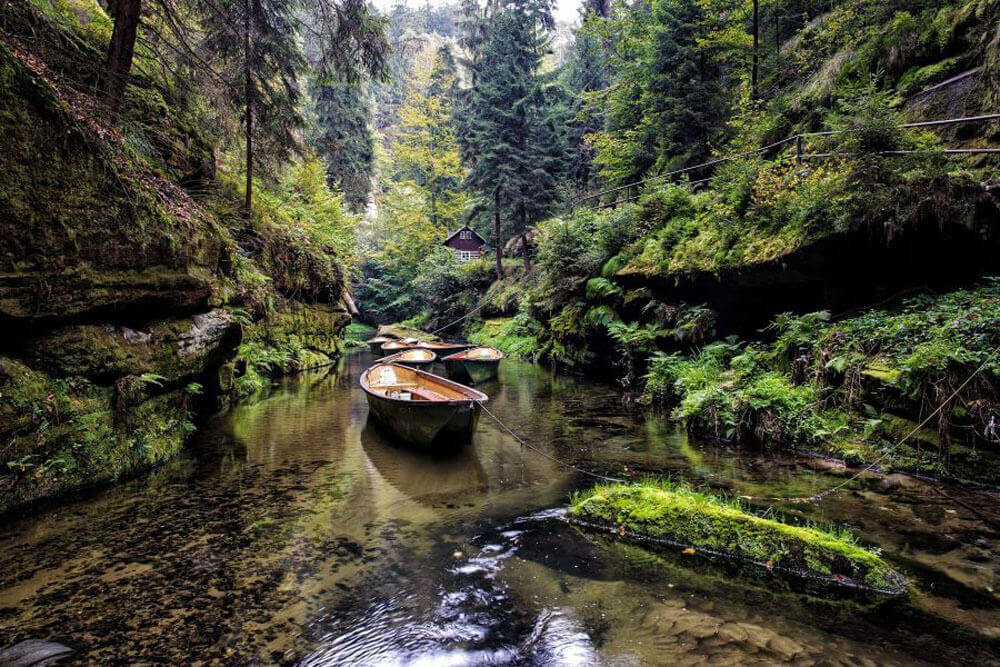
However, the romantic name Czech Switzerland can be somehow confusing for travelers. Many of them think they are going to explore some parts of “Swiss” Switzerland when they leave Prague with their guide. When they get to know the truth they are relieved since they are not going to spend so much time in the van.
But some questions remain, mostly not asked out loud. Why is that place called Switzerland then? Is it going to be as beautiful there as in Switzerland? Is it going to look like the Alps? What is actually the story behind the name Switzerland? We will tell you that in the following lines.
To put you in context, let's also explain the terms Bohemia and Saxony. Back in the 19th century, Dresden was already a big and important city. It was a contrast center of the Kingdom of Saxony at that time. Historical and modern. Industrial and artistic.
The hotspots of the art in Dresden were, quite logically, the King's Court and the Dresden Art Academy. In 1766, the Swiss painter Anton Graff became the court´s portrait artist and a teacher at the academy. The same year, another Swiss artist came to Dresden to work at the academy - Adrian Zingg.
A few decades later at the end of the 18th century the work of not only artists all over Europe was strongly influenced by the movement of Romanticism. Partly as a reaction to the Industrial Revolution, romanticism also emphasized nature and its wilderness.
During the stay of the two Swiss in Dresden, both of the artists regularly visited the natural wonders at the border with Bohemia (Czechia). Together with their students, they made day-long journeys on foot to admire the wilderness. And of course to transfer the beauty on canvas. The cliffs and gorges reminded them of their home - the Swiss Jura Mountains. They look different from the Alps, but they concur with their beauty undoubtedly. So these Swiss artists started to call this unknown, untapped, hardly accessible region the “Saxon Switzerland” and soon afterward the name “Bohemian Switzerland” began to be used for the “Czech” part of that region. According to some sources, the name Czech Switzerland, or also Bohemian Switzerland was used for the first time in 1835.
Since these artists were probably among the very first visitors ever to the area, the name they gave it simply stuck with the place.
Remember that this national park is divided into two national parks:
The name containing both parts, i.e. Bohemian-Saxon Switzerland, is non-geographical, but a folk name used to name the landscape on both banks of the Elbe between Děčín and Pirna. Read more about activities around the Elbe.
Now you know all the story behind the word (Saxon, Bohemian) Switzerland. These trips of the two Swiss were the big bang of tourism in the region. Completed paintings were exhibited or sold in many places. When (usually rich and educated) people saw the paintings, they wanted to see the places personally.
This "Instagram principle“ brought more and more travelers and tourists to this beautiful part of Central Europe. And not only to the German (Saxon) part but also to the Czech (Bohemian) one. Even nowadays you can spot many dates from the pioneer tourists carved out in the rather soft sandstone. For example, at Bastei you can see these dated to the late 18th century. Amazing, right?
Come and see the picturesque landscape along the Elbe River, which not only two Swiss painters fell in love with, but also thousands of tourists. We offer group tours with experienced guides departing from Prague.



The best choice for an active tour that will take you to the 3 ultimate highlights of the area: Pravcicka Gate stone arch, a boat ride in Gorges and the Bastei Bridge.

The best choice for an active tour that will take you to the 3 ultimate highlights of the area: Pravcicka Gate stone arch, a boat ride in Gorges and the Bastei Bridge.

The best choice for an active tour that will take you to the 3 ultimate highlights of the area: Pravcicka Gate stone arch, a boat ride in Gorges and the Bastei Bridge.